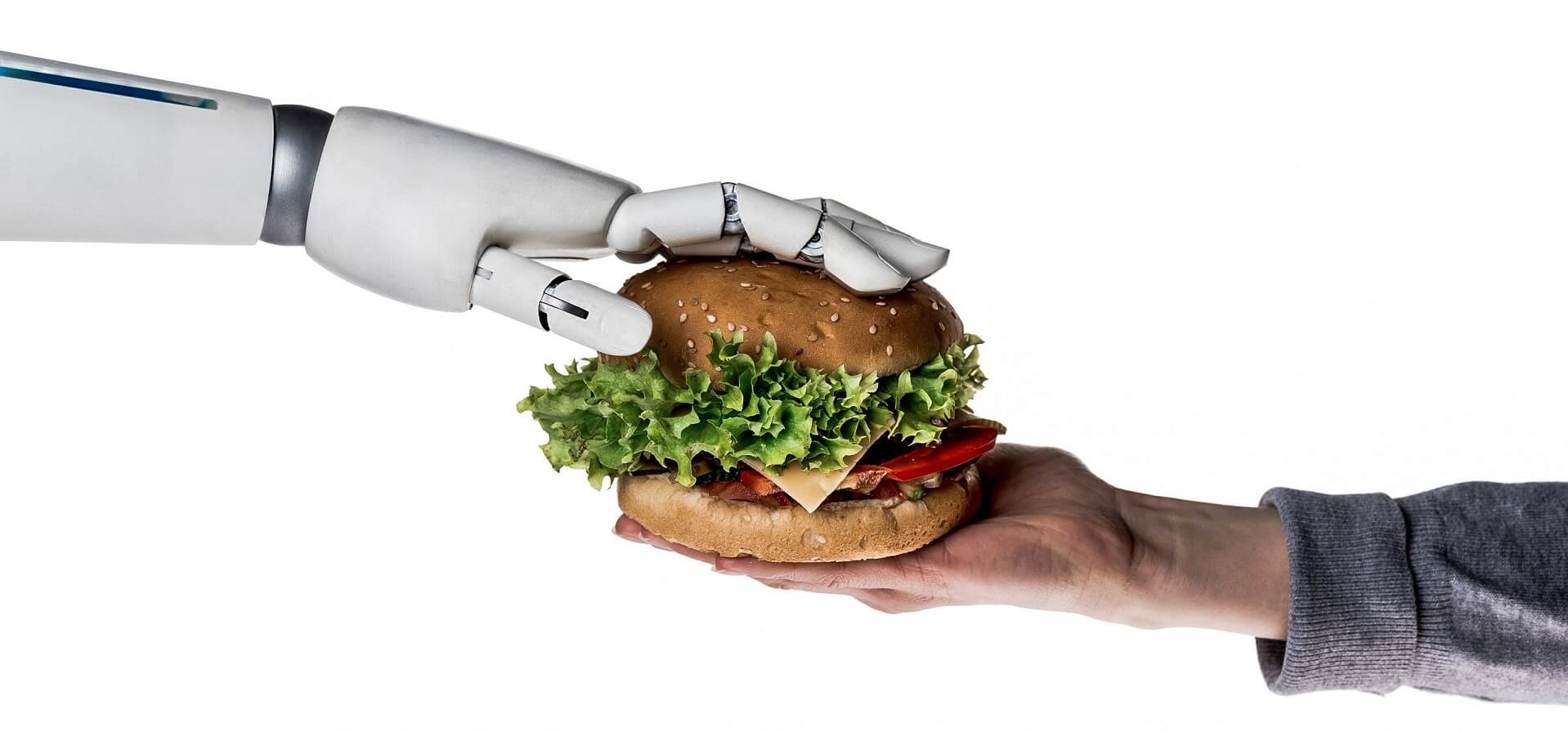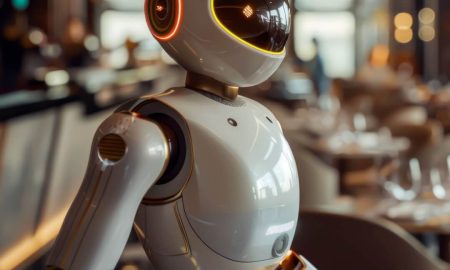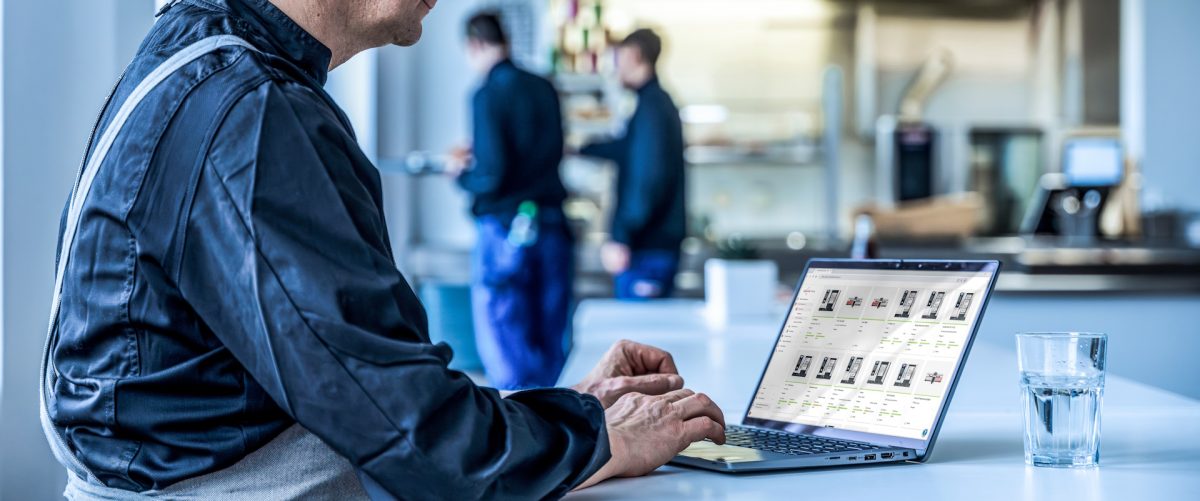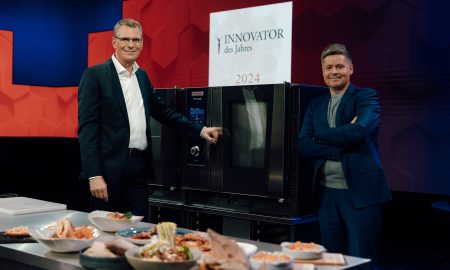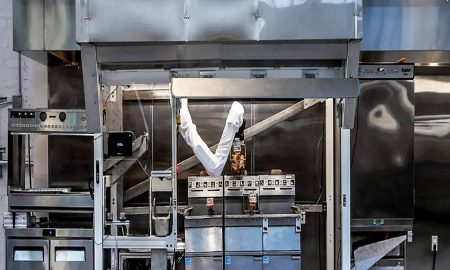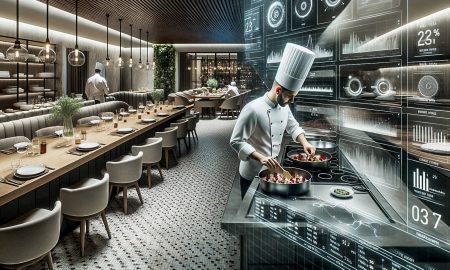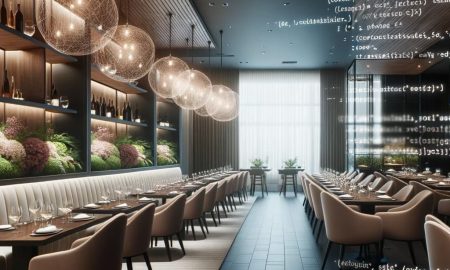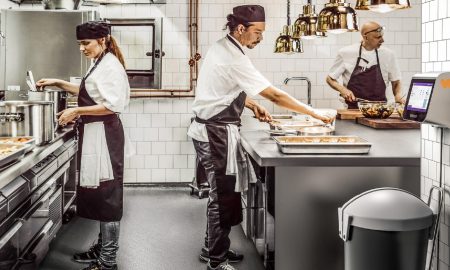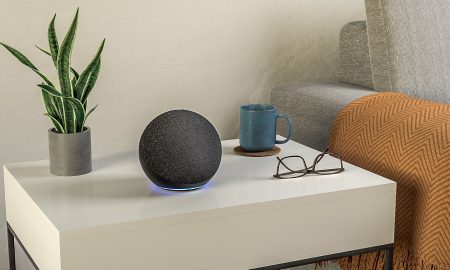THE PHANTOM of artificial intelligence notoriously haunts and stalks the gastronomy industry. His latest prank? Cooking robots.
Initially designed to be used in private households, the automated assistants should also be brought into commercial kitchens as soon as possible. The chance that this will actually happen? Zero.
However, technology, automation and process optimization in the kitchen will continue to be major topics for the industry in the years to come. However, the question is, which innovations and trends will actually shape the future of gastronomy?
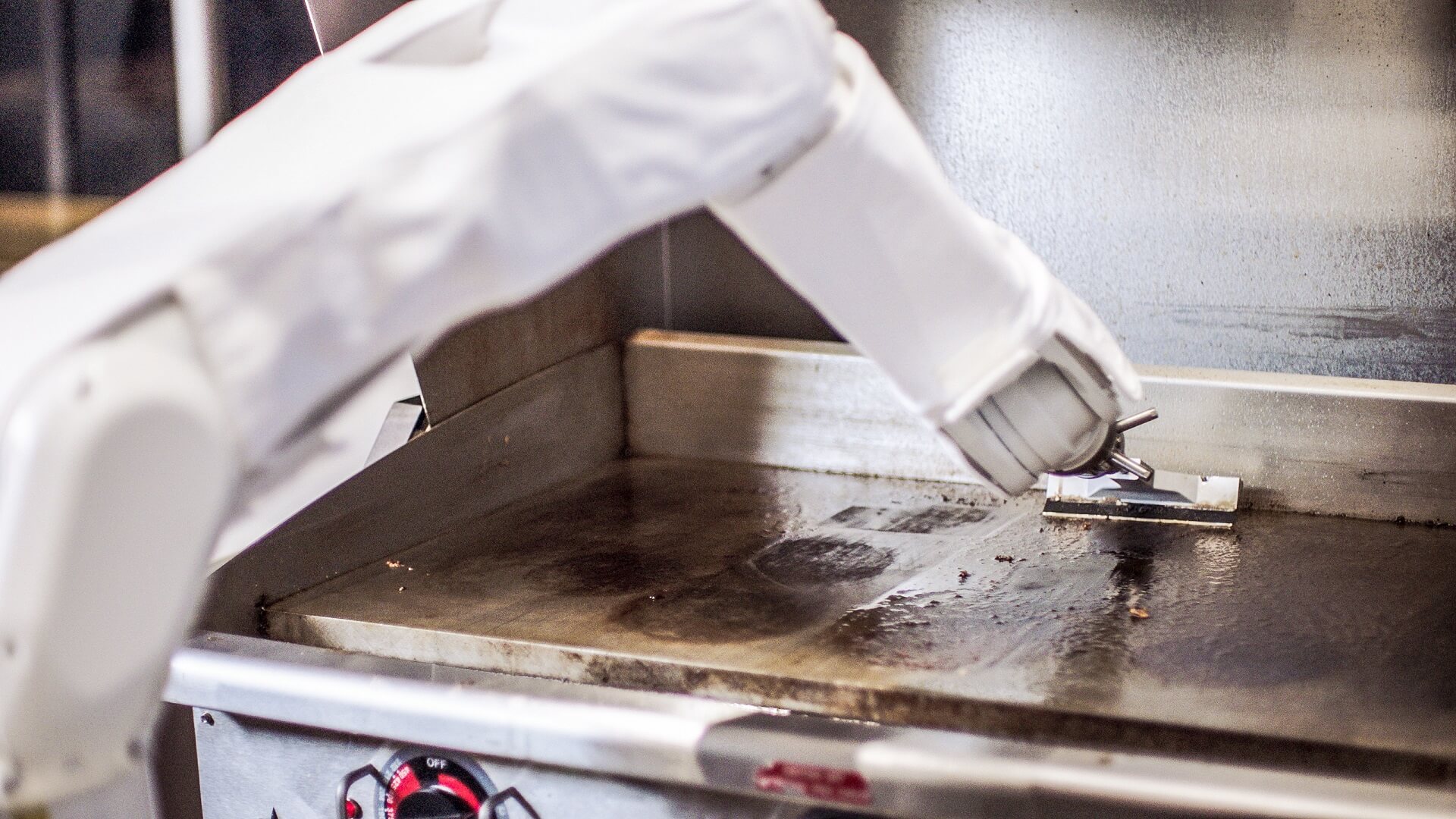
Image: Dianer | Miso Robotics
Im modern gastronomy, increasing efficiency is everything. An efficient kitchen is one used to its optimal potential, no matter how busy it is or how much the concept needs to be adapted.
PLANNING WITH SYSTEM
First, let’s return to reality and examine where we actually stand in terms of kitchen planning and basic technology.
Fact is: a high technical standard is a fundamental requirement for many chefs today, not merely the extra cherry on top.
High-performance induction beats gas, hygienic design kitchens with seamless countertops and the like are much more fun than cleaning-intensive stainless steel relics. Instead, it’s more a matter of organizing high-end hardware in the available space in such a way that workflows can be more efficiently designed. The more precisely designed the equipment layout and the simpler the operation, the easier it will be to bring system into a kitchen.
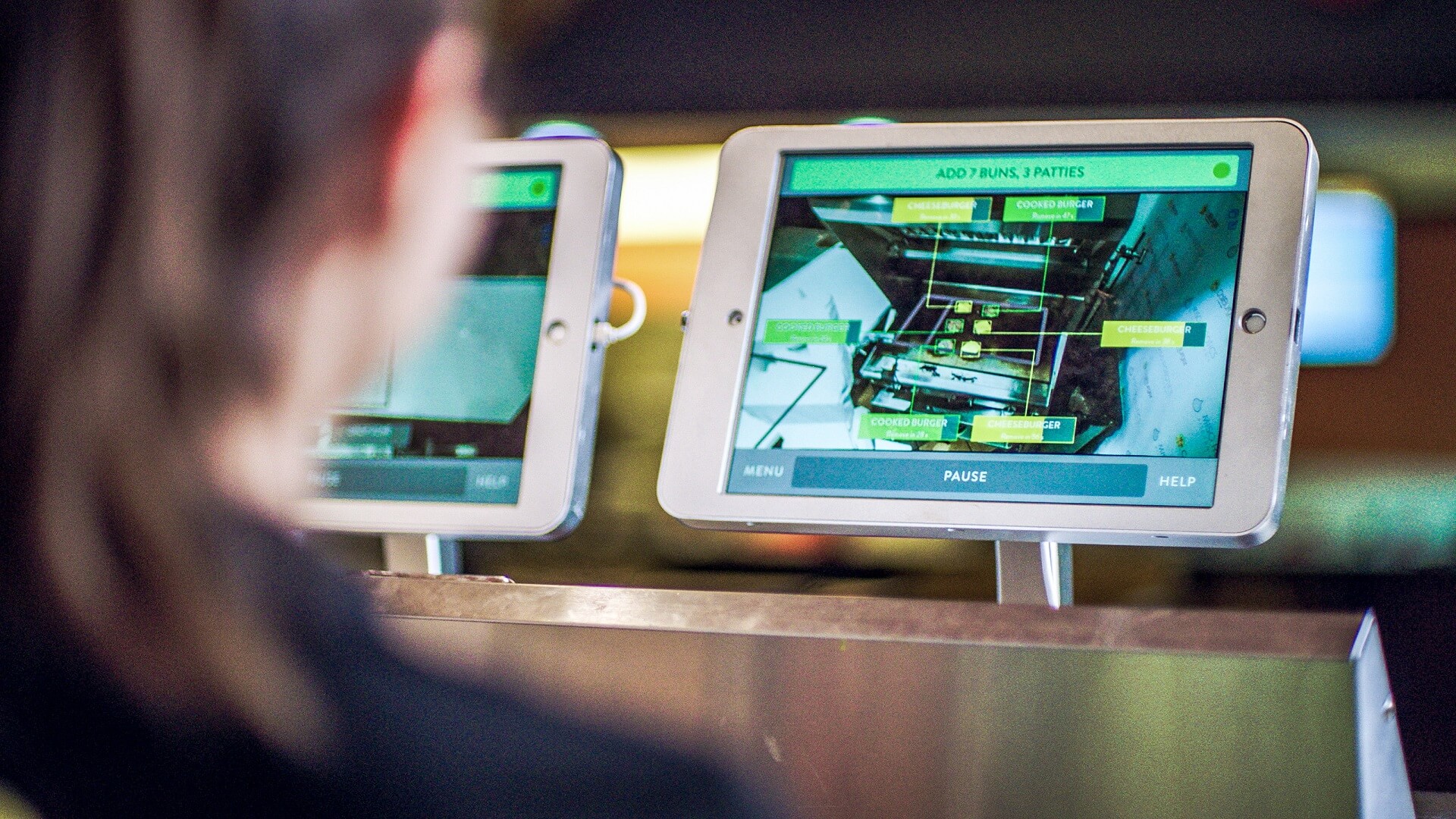
Image: Dianer | Miso Robotics
Particularly in upscale restaurants, chefs are still prone to digging their fingernails into their cheeks in horror when they hear the word “system”. However, systematizing processes and simplifying them for the crew makes sense for any kitchen and operational concept. Along these lines, you should not make the mistake of equating system with immobility. In fact, the opposite is true. Flexibility and modularity are the buzzwords of the day.
Gone are the days when kitchen planning and technology were based exclusively on the current concept. Particularly in the owner-operated restaurant business, both have long been geared toward what needs to be hoisted over the pass for the next 25 years. One concept equals one kitchen – the end.
However, if you open a French restaurant today, you might switch to a tapas bar in three years. If you’re now running a six-person kitchen crew, there may soon only be three of you behind the stove. And if you never gave a hoot about creating a fixed to-go menu in the past, you may be relying on them in the future – think pandemic. The very definition of “restaurant” will evolve in the years ahead, with mixed models of on-site, takeaway and delivery services becoming increasingly important. In other words, when planning and equipping a kitchen, if you don’t think as far ahead and modularly as possible, you’ll quickly run out of steam halfway through.
View this post on Instagram
Multifunctional devices and digitalization will have a major impact on the food service industry in the years to come.
SMALL IS BEAUTIFUL
As with all organizational units – and, strictly speaking, a kitchen is exactly that – the following applies to today’s kitchen design: it’s harder to steer a big ship than a small one. In an industry beset by efficiency, time and cost pressures, which also has to cope with chronic staff shortages, size is increasingly unlikely to provide an advantage.
In the past, it wasn’t just large commercial kitchens that resembled ballrooms rather than efficient workshops, the same was true for many high-end kitchens. Today, the trend is clearly moving towards smaller, more compact, more flexible and – most important of all – multifunctional kitchens. Perhaps the most striking reductions can be seen in the company canteen sector, where they are increasingly relocating production to front cooking stations.
However, even in the top gastronomy sector, they are moving toward streamlining space while at the same time optimizing workflows. This makes sense, considering the ultimate lack of available staff. Multifunctional self-cooking centers fit into even the smallest kitchen, are mobile and easy to operate even for less well-trained staff.
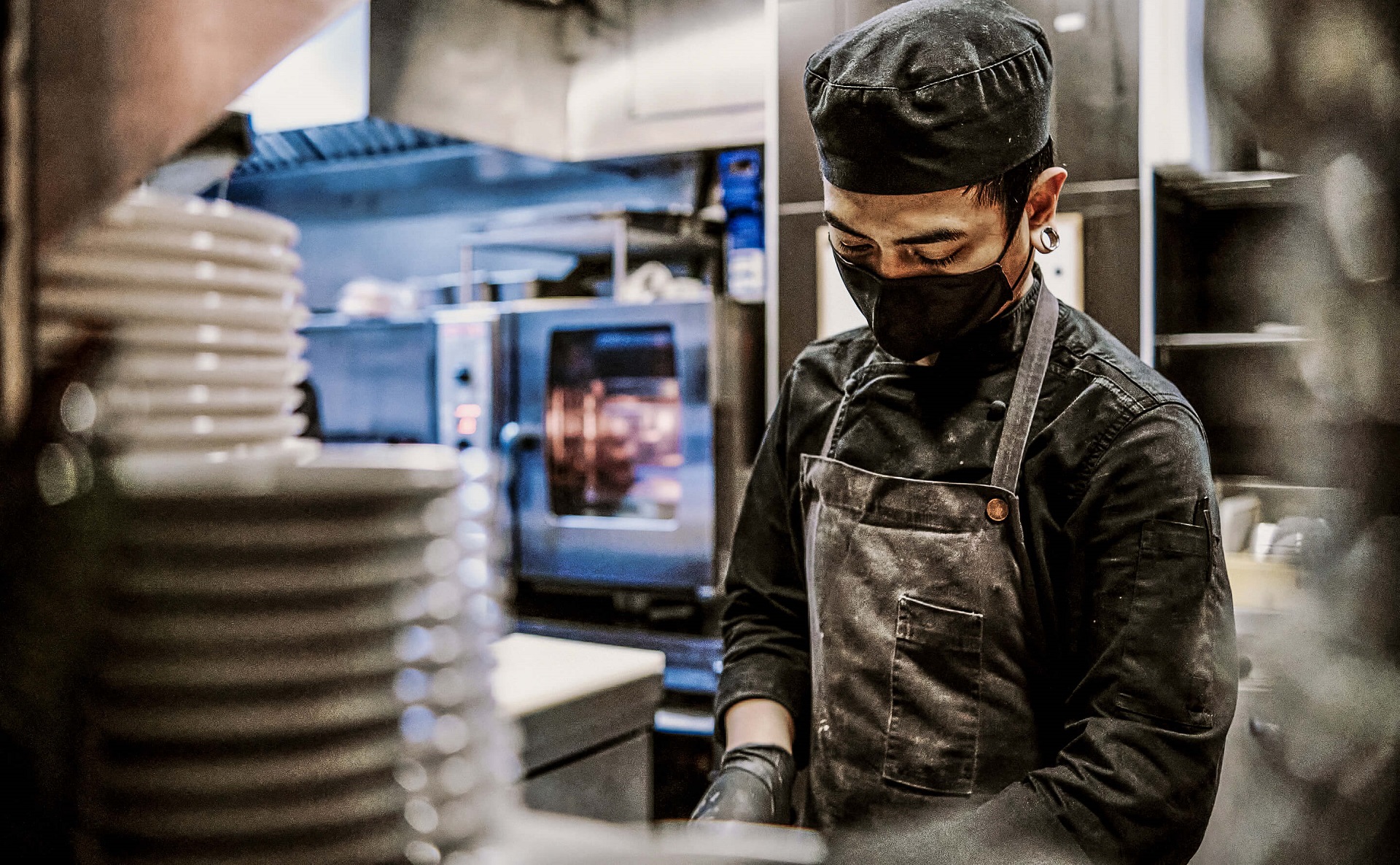
Image: AdobeStock | alvaro
THE DIGITAL REVOLUTION
Besides this growing trend towards multifunctionality, digitalization is a key factor that can create enormous benefits in the future in terms of process optimization and cost reduction. Innovation particularly focuses on connecting smart devices. Multifunction device manufacturers have already jumped on the digitization bandwagon.
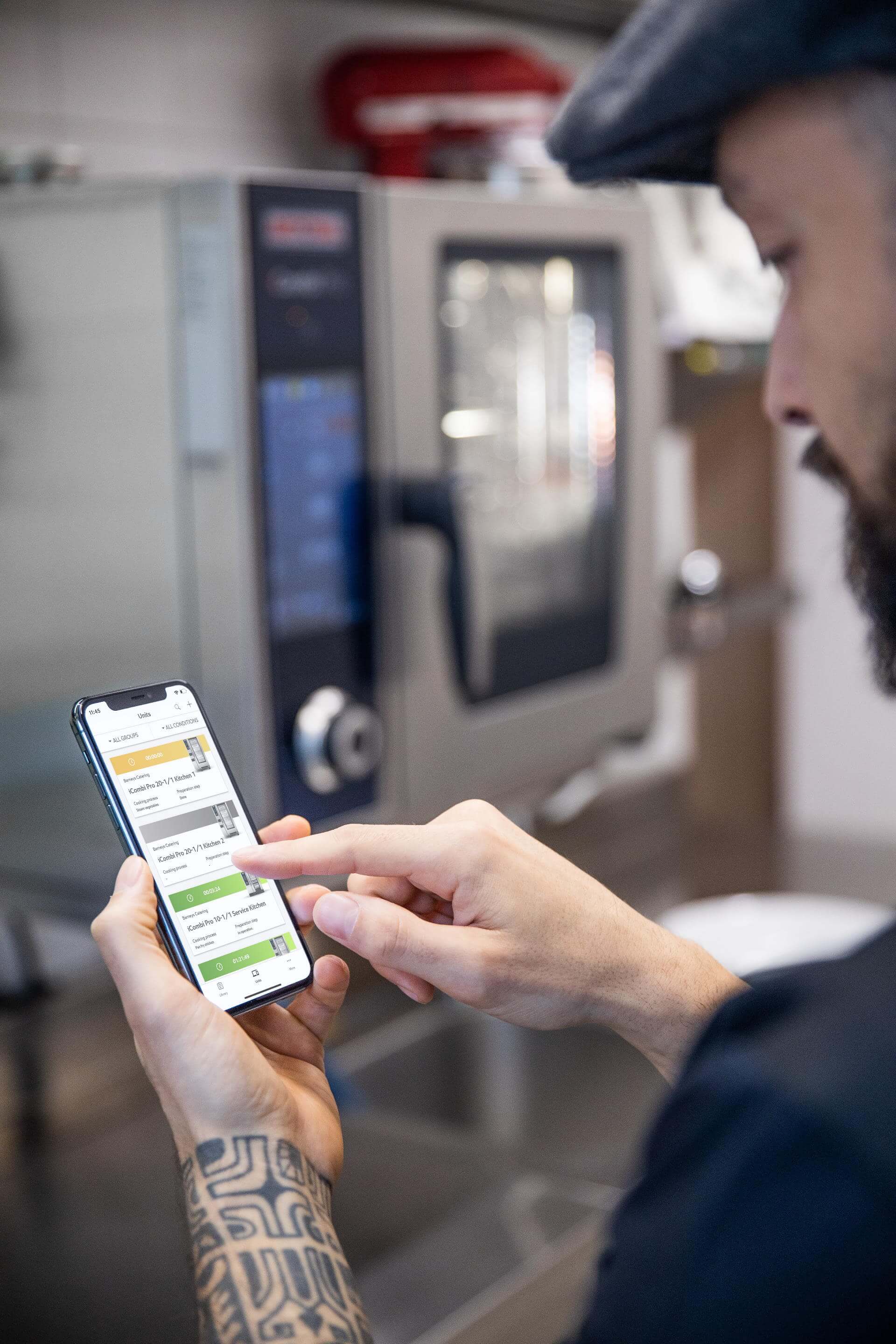
Connected Cooking Anwendung auf dem Smartphone| Image: Sapori & Vino
A cloud-based solution allows you to network different devices with each other. With its comprehensive recipe, equipment and hygiene management, kitchen operating system software is especially appealing to businesses with multiple locations.
However, one question still remains. Is investing in a perfectly planned professional kitchen, multifunctional equipment and high-end software really worth it?
For those who think long-term, the answer is yes. After all, a kitchen is still the most expensive thing to buy twice. These little helpers on the market facilitate work processes, save energy and operating costs, and are therefore invaluable tools for achieving quality assurance in times when skilled personnel are in short supply – and will likely remain so.
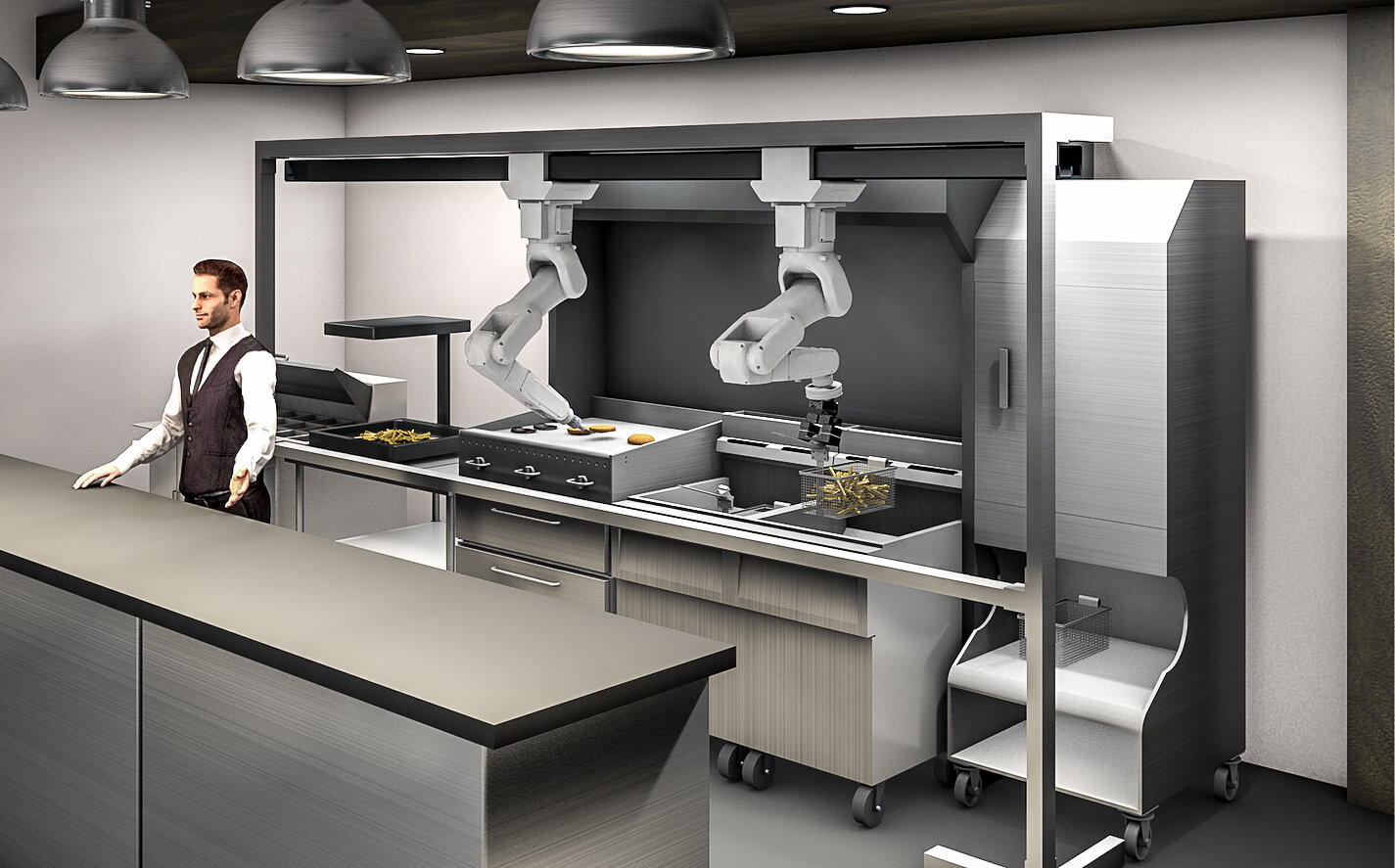
Image: Dianer | Miso Robotics


